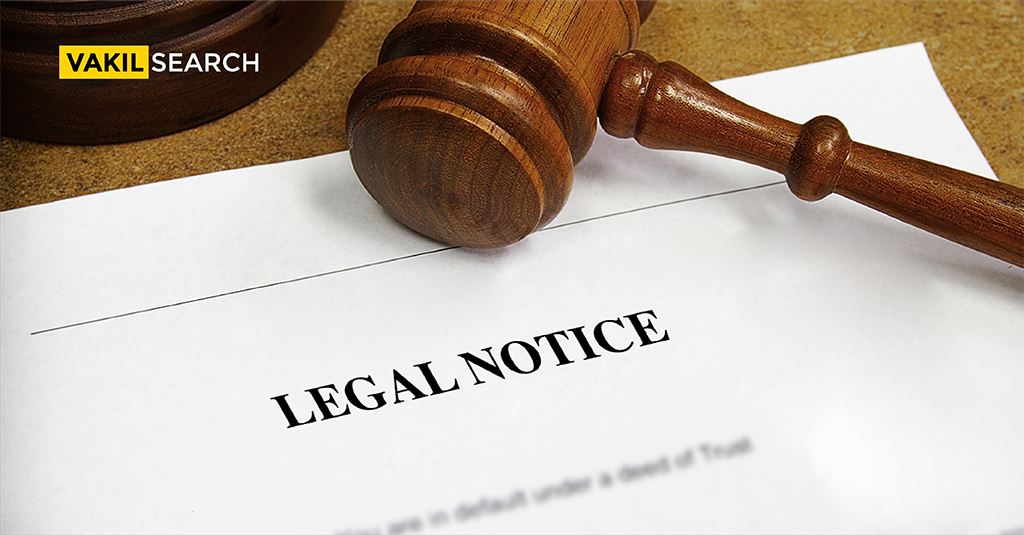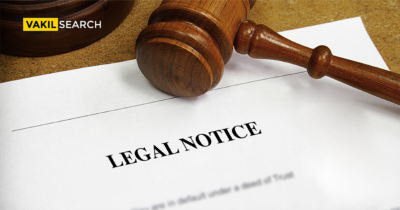Here's the complete guide to writing a worthwhile true notice prior to making a legal move against a specific party.
The true notice is a written warning for the accused or defendant filed by a particular law firm on behalf of the victim. The two parties involved in filing a true notice, the defendant and the victim, are usually referred to as the addressee and the sender, respectively. The sender and the addressee can both be individuals or even firms. A true notice is a formal communication that notifies an individual or organization of their legal obligations or liabilities. Know about the format of true notice and its importance
The Importance of Writing a True Notice
The purpose of the Format of true Notice is to inform the addressee about grievances from his/her side before taking legal action. Filing a true notice is the first step in litigation. It gives the sender an upper hand in the case. Although it seems to be just a formal and very trivial step, it’s of prime importance to both parties involved.
Finding a Middle Ground
The main purpose of true notice is to bring both parties to a middle ground. It gives the addressee a chance to negotiate with the victim without involving the court in the matter. In case the addressee doesn’t respond to the true notice within the given time, the sender has the right to continue the litigation or lodge an FIR against the defendant.
Resolving the Dispute
A true notice is likely to resolve the dispute between both parties unless it is of some serious nature. If the sender knows that grievances can be resolved by the addressee, he must give a chance to the other party in the true Notice Format.
Saving Time and Money
If an issue gets resolved by merely a true notice outside of court, it’s going to save time and money for both parties involved. It’ll save them from having to attend trials and paying hefty amounts of money to different lawyers.
How to Write True Notice Efficiently: Step-by-Step Guide
true notice may not be mandatory in every case, but some cases strictly demand a written warning from the victim’s side before actually filing a suit against the defendant. Failing to comply with a true notice can result in severe consequences, including fines, penalties, or legal action. Therefore, you must know the basic steps to write a Lawyer notice format. A few important ones are listed below:
- Contact an expert lawyer or law firm.
- Talk in detail with your lawyer.
- Prepare the necessary documents.
- Write a Format of true Notice.
- Proofread the draft.
- Get the final draft signed.
Step 1: Contacting a Lawyer
A true notice will just be a “notice” unless it is sent to the addressee by a lawyer. It is because only a lawyer has the right to send a notice to the accused party in a legal manner. Therefore, it is important to seek out a professional lawyer who is an expert in the field. You may contact a law firm for this purpose.
Step 2: Sharing the Details
Share all the important details related to the case with your lawyer. You must trust your lawyer with the minor details of the matter. Do not hesitate to inform him about compensation that the other party owes you. It’ll help your lawyer understand the case in depth. It is the only way he’ll be able to draft an efficient true notice against the accused.
Step 3: Getting Documentation Ready
Prepare all the documentation needed to Format of true Notice. It includes the complete information on the addressee and the documents related to that specific case, for example, receipts, affidavits, etc.
Step 4: Writing a Draft
You can write the notice all by yourself if you are a lawyer. Otherwise, you may ask your lawyer to write a draft. The components of the draft are mentioned in the next section. It should be written with all the legal terms so it’ll be understandable to the court if litigation is required later on.
Step 5: Proofreading
Proofreading the draft is important to avoid any grammatical errors or missing information. It is also necessary to ensure that the lawyer has not mentioned anything irrelevant to the case. If you are drafting the notice on your own, get it read by some other legal personnel after you are done with writing.
Step 6: Signing the Final Notice
Once the final draft of the true notice is ready, it will need the signatures of both the sender and the lawyer at the end.
You can also go through here for the Legal Heir Certificate
Components of a True Notice
- The name and address of the law firm or the lawyer issuing the notice
- The date on which the notice is issued
- Full names and addresses of both parties involved
- The subject of the true notice and the act under which it is issued
- The body of the true notice containing the details of grievances as reported by the sender and the time which the defendant has before the sender takes legal action
- An offer of negotiation or relief sought in the closing part of the notice
- Signatures of the sender and lawyer
Tips to Write True Notices Efficiently
- The language of your true notice should be easy to understand. It may be in English or Hindi.
- Avoid the use of abbreviations and jargon.
- Keep the body of your true notice short and to the point. Usually, 80 to 100 words are enough.
- You may use CAPITALS to elaborate on the subject matter.
- If you don’t have sufficient knowledge of the law, get your draft done by a lawyer.
- It is preferable to give the addressee a time frame of one to two weeks for negotiation in your true notice.
- If you are willing to resolve the issue outside of court, show your consent in the draft.
- State your damages in precise facts and figures.
- Offer the other party alternatives to litigation if possible.
- true notice must be sent to the addressee through some registered postal service. You must also keep the receipt of the post as evidence to show that you’ve already informed the other party about the matter.
- You may send the true notice through email since it can save you time.
Conclusion
It is important to write a true notice to establish the authority of the victim over the accused. Not only does it allow arbitration between both parties, but it also saves them time and money. An effective true notice also makes it possible to resolve the case without taking it to court. true notices may be sent for a variety of reasons, including breach of contract, copyright infringement, or violation of a law or regulation.
You may follow the above-mentioned steps and tips to write a true notice all by yourself. Otherwise, you may ask a lawyer to write it on your behalf. But if you don’t want to take the risk of any error and need to write a true notice in a precise way, you may contact Vakilsearch right at this moment.
FAQs
What is legal notice from the advocate?
A legal notice from an advocate is a formal communication outlining legal grievances, demands, or intentions to take legal action on behalf of a client.
Can any advocate send a legal notice?
Yes, any advocate can send a legal notice on behalf of their client as part of the legal process.
Can we ignore lawyer notice?
Ignoring a lawyer's notice can lead to further legal actions, potentially affecting your legal standing in the matter.
What is the time period for advocate notice?
The time period for responding to an advocate's notice is typically mentioned within the notice itself, often ranging from 15 to 30 days.
What happens if we don't respond to lawyer notice?
Not responding to a lawyer's notice may escalate the matter, potentially leading to a lawsuit or other legal actions.
What is the next step after legal notice?
The next step after receiving a legal notice is to consult with an attorney to understand your legal options and formulate a suitable response.
What is the cost of legal notice in India?
The cost of a legal notice in India varies based on the complexity of the case, legal fees of the advocate, and the nature of the notice.
What happens if legal notice is not accepted?
If a legal notice is not accepted or acknowledged, it may still be considered valid if proper legal procedures were followed during the delivery attempt.
How many times can a legal notice be sent?
There's no set limit on the number of times a legal notice can be sent, but it should be reasonable and based on the legal merits of the case.
What is the difference between legal notice and advocate notice?
The terms 'legal notice' and 'advocate notice' are often used interchangeably, both referring to a formal communication sent by an advocate on behalf of a client to address a legal matter.
What is legal notice on behalf of an advocate?
A legal notice on behalf of an advocate is a formal communication addressing legal issues and concerns, sent by the advocate representing their client.
What happens when someone refuses to receive lawyer notice?
When someone refuses to receive a lawyer's notice, alternative methods such as publication in newspapers or affixing the notice at the address may be used to ensure legal compliance.
Is there a time limit to respond to a legal notice?
The legal notice usually specifies the time within which a response is expected, typically within 15 to 30 days from the date of receipt.
Who can issue a demand notice?
A demand notice can be issued by a creditor, lender, or any authorised entity to demand payment or action as per agreed terms, often related to loans, debts, or contractual obligations.
Read More:









